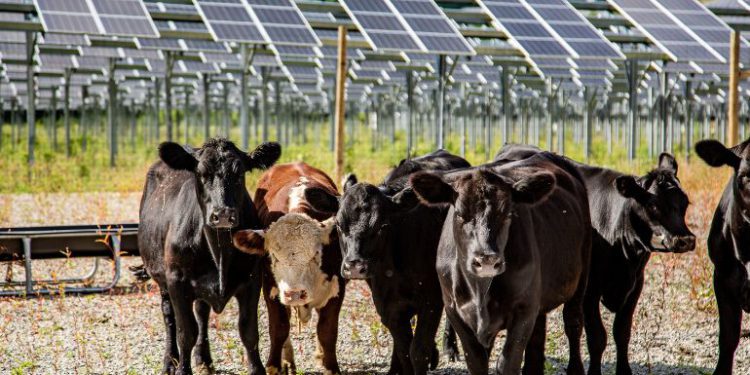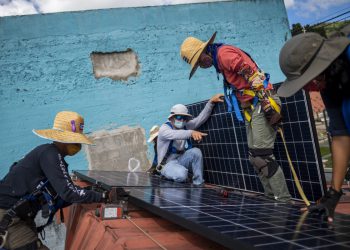
Photo: DOE
Across the United States, energy demand is surging after decades of stagnant growth, due to electrification efforts, data centers and artificial intelligence. As demand increases, the economics continue to favor wind and solar, which consistently outcompete gas and coal in affordability. As rural communities look to increase renewable energy, a unique opportunity presents itself.
Flat, sunny, easily accessible land that is ideal for solar farms is often already in use for agriculture. A new report from the Institute for Energy Economics and Financial Analysis (IEEFA) highlights the opportunity to expand the use of agrivoltaics to boost generation from renewable energy, decrease water use and increase yields — providing a win for renewable energy and agricultural communities.
Agrivoltaics — the dual-use integration of solar panels and active farming on the same land — offers a solution that benefits all three core stakeholders. Landowners gain a new, steady revenue stream in a volatile industry while maintaining their land’s agricultural productivity; solar project developers get access to viable sites with fewer permitting battles; and communities retain agricultural land in production while enjoying local investment and tax revenue.
A recent short film, “Save the farm, save the future,” also highlights the benefits of agrivoltaics.
“Agrivoltaics demonstrates that agricultural production and solar development can be complementary rather than competing options for land use,” said Asher Salkin, former research intern at IEEFA and author of the report. “Our research shows that using agrivoltaics in agricultural settings increases crop yields in water-stressed regions, which not only lowers operating costs but also improves soil and ecosystem health.”
While still not widespread, agrivoltaics installations are expanding, growing from 27,000 acres with 4.5 GW of capacity in 2020 to more than 62,000 acres and 10 GW in 2024 — enough to power 1.5 million homes. With supportive policies, agrivoltaics could help small farmers, meet growing electricity needs and include more rural communities in the energy transition.
Read the full report here.
News item from the Institute for Energy Economics and Financial Analysis
















